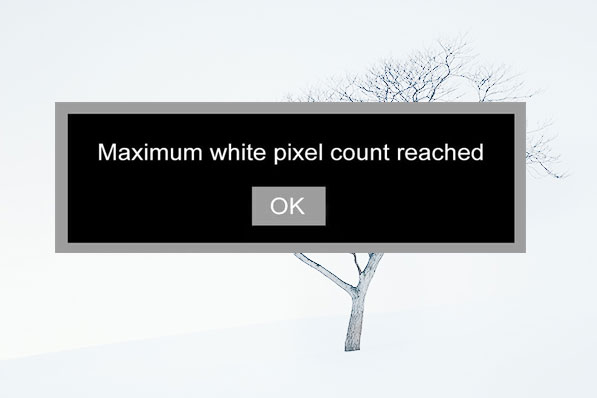If you keep using the same camera for more than 4 or 5 years in snowy locations, you’ll eventually encounter the dreaded “maximum white pixel count reached” message. Once you reach this point, your camera will no longer be able to record snow any more.
It’s the error message that all keen winter shooters should dread, because it signifies that the camera has been subjected to an unhealthy amount of RGB 255,255,255 scenes that all the white pixels have been used up.
That means no more Lofoten. No more Iceland, and no more Hokkaido.
It also means no more lone-tree-snow scenes.
As you can imagine, this last point personally caused me a great deal of panic.
There are so many hapless photographers out there using a camera that is effectively a time-bomb. With each actuation, with each shutter press fired in a snow scene, they are slowly marching their camera towards a snowy demise.
A hapless bunch of photographers. Unknowingly, their cameras, all heading towards a snowy demise.
It’s certainly been a costly exercise for me. After each winter has passed, my digital cameras are often ready for the bin. That is, until recently.
There is a solution
To avoid your camera ever reaching white-pixel burn out, some photographers are advising to turn the exposure compensation to minus one (-1).
The reasoning is that this will ensure that your camera never uses any white pixels. At all. Which is great because you’ll completely avoid the possibility of ever running out of them.
The downside is that your pictures may suffer from being slightly dull. If you feel your images look a little dark after using this solution, I’ve found that turning the brightness dial of my monitor clockwise by a third can help a lot. More than you can imagine.
Parting thought
White-pixel-death is going to become a bigger problem in the years to come. As winter photography rises in popularity, camera manufacturers are going to have to think long and hard as to whether it may be worth setting the exposure compensation to minus one as a factory default.
I’ve even heard some rumours that some cameras may be released as special snow-editions. These models are essentially packed with twice as many white pixels as the standard models.
It’s early days yet, but it seems there may be a solution to keeping me happy shooting my lone-trees and white snow scenes for many years to come. Until a permanent solution is found, I’d advise we all just continue to work with exposure compensation set to minus one, and if that isn’t possible, shoot any snow scenes at night time when it’s dark.


